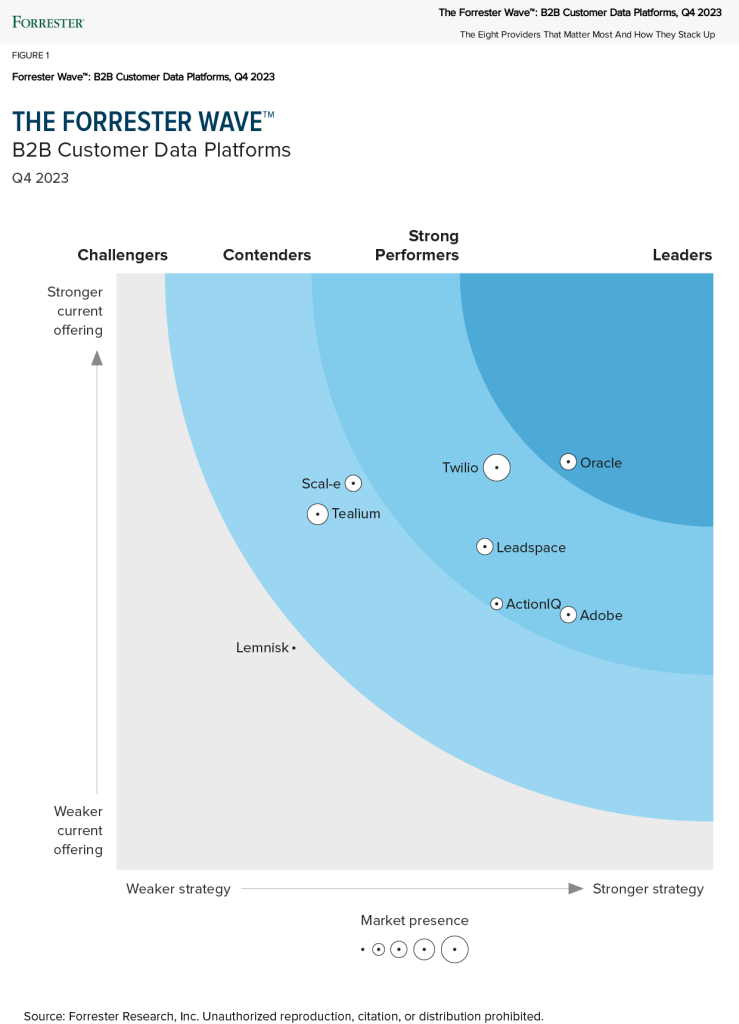As I’ve discussed in recent blogs, one of the main issues sales and marketing teams experience is not getting enough value from their data. Unfortunately, simply adding more data hasn’t been solving that issue. The reason for this lack of value is that customer or buyer data is naturally fragmented. The data comes in many different formats and with different IDs. The number of sources is growing, which makes tracking identities across them even more difficult. On top of that, cookie loss and privacy rules are a constant, evolving battle. Identifying buying groups, companies and individuals, and then connecting them in the context of company hierarchies (the only way that routing really happens) adds a massive layer of complexity to the B2B buyer data space.
Unfortunately, the problems associated with having all that fragmented data doesn’t stop at the stress of manual data unification. With fragmented data, sales and marketing teams lack a complete view of individuals and how those individuals relate to projects, buying groups and corporate families. As most data is static, the teams lack a real-time view of behaviors and organizational changes. Jobs change constantly and updating your database or CRM is a tedious, neglected process – by the time you’ve identified a job change and updated your data, there’s a good chance that even more people will have changed jobs. Additionally, fragmented data prevents important use cases such as implementing AI models, personalizing messaging, consultative selling, timely outreach and understanding the role of the individual within a buying group.
Many companies lack the ability to unify data and keep it up-to-date. A CRM doesn’t solve the problem as it provides only a partial, disconnected view of the data, and relies on manual duplication identification and account/company/people mapping – all of which is often neglected.
As I’ve discussed in previous blogs, a well-established Identity Resolution framework is the solution to all of this fragmented data. The best Identity Resolution framework will look at all of the data sources and make direct matches when there are 2+ IDs on the same record, and indirect matches when a record with one ID is linked by other records to other IDs. When 2+ sources show different values for the same field on the same account or contact record, the Identity Resolution framework uses cross-signal analysis to identify the correct information for that part of the account or contact record, then compares diverse sources and timestamps for movement to create a consensus-based best solution for any missing/contested fields on a particular record. Once IDs are linked and records are complete, you can automatically build buyer profiles for people, companies and buying groups with reports on individual or group behaviors/interests, then apply predictive scoring models. Finally, you can identify buying groups by focusing on target personas that go beyond job title match – looking at expertise, specialties, who they report to and more. You can put those contacts into your funnel through advertising or email and assemble the buying groups and intelligence around them into your CRM for a true TAM-to-opportunity pipeline.
When it comes to territory planning, cross-sell, up-sell and penetrating new markets, understanding the hierarchical structure of an organization or corporate family is critical. Building out hierarchies depends on resolving and associating identities across your buyer data and TAM within your CRM – making an Identity Resolution framework entirely necessary.
In case you missed previous blogs, in their evaluation of B2B customer data platform (CDP) providers, Forrester researched, analyzed and scored the most significant current solutions available in The Forrester Wave™: B2B Customer Data Platforms, Q4 2023. There’s one category in particular that really matters when it comes to building out buying groups and hierarchies in your CRM – Identity Resolution & Profiles. Only one platform scored a solid 5 out of 5 in Identity Resolution & Profile, and that company is Leadspace.
From that wave, Forrester found that, “B2B CDPs are using AI to improve audience creation and personalization.” They concluded that B2B CDP customers should seek a solution based on 3 major capabilities:
- Offers real-time data unification and identity resolution.
- Supports buying groups and has buying group expanded capabilities on the roadmap.
- Uses AI for insights, journey mapping, and next best action.
These capabilities all boil down to the identity resolution framework. It needs to be able to resolve the identities of companies and people so that the correct information is associated with the correct entity. This is necessary for achieving real-time unification, discovering buying groups, and applying AI insights for next best actions.
Because the effectiveness of data-driven decisions depends on the quality of the underlying data (unified buyer profiles), a perfect score in this category is extremely significant. When your buyer profiles are backed by the best identity resolution available, it becomes much easier to discover and explore hierarchical structures with global, domestic and subsidiary ultimates. Identity Resolution is at the heart of every successful B2B GTM strategy.
Let’s take a glimpse into what our hierarchies look like from the backend before it goes into your CRM with Leadspace Market Activation Packs (MAPs), specifically the Corporate Families Map. Here you can explore corporate hierarchies and predefined market segments to visualize and understand the dynamic environment that your target audience exists in for easy territory assignment and CRM clean up. You can filter and segment further to segment and penetrate new markets, industries as well as opportunities for cross-sell / up-sell.
The Leadspace graph leverages 30+ B2B sources with 230M+ companies and 700M+ people to generate profiles with hierarchies. Leadspace is not a static database, meaning that our buyer data and hierarchy mapping is continuously updated.
Disclaimer: This is a demo environment, so certain features and access to data are available only to licensed customers.
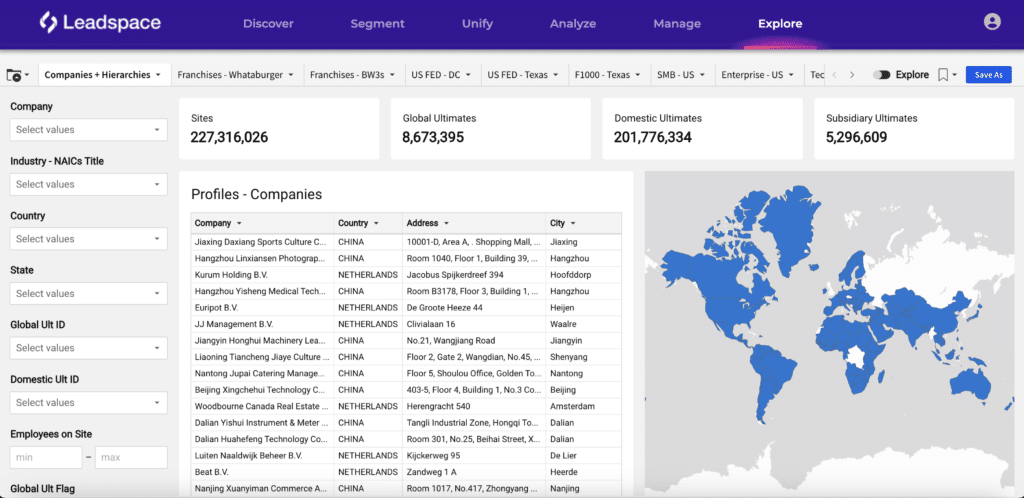
When you enter the Leadspace platform and select the “explore” tab, you’re presented with the discovery interface, with each of your specific MAPs at the top. Without doing any kind of data unification or mapping of my own, I’m immediately presented with an impressive amount of pre-mapped company data: 227M+ sites, 8M+ global ultimates, 201M+ domestic ultimates, and 5M+ subsidiary ultimates.
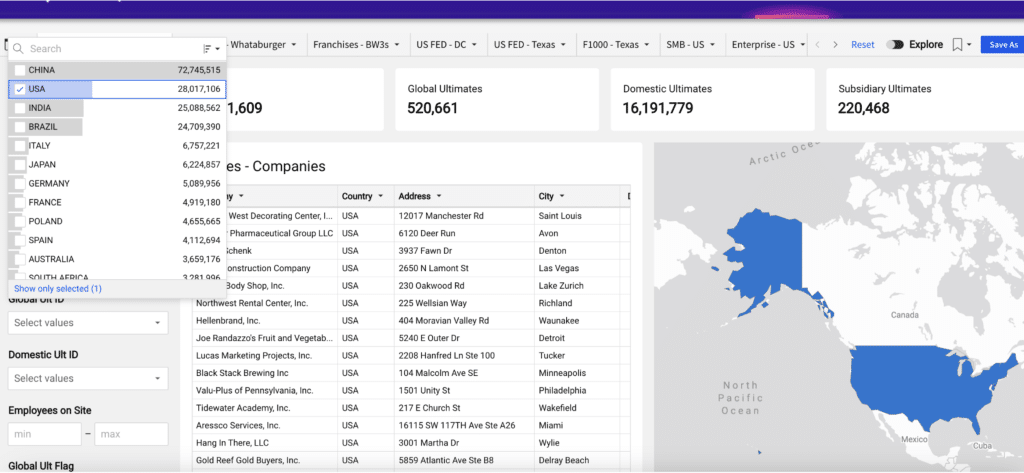
With an interactive map and the list form of company profiles instantly visible, on the left side of the screen are several filters – company search, industry NAICs titles, country, state, Global Ultimate ID, Domestic Ultimate ID, number of employees on site, global ultimate flag, domestic ultimate flag, subsidiary ultimate flag and franchise groups. When I modify the filter criteria, the list and map automatically adjust to the new criteria.
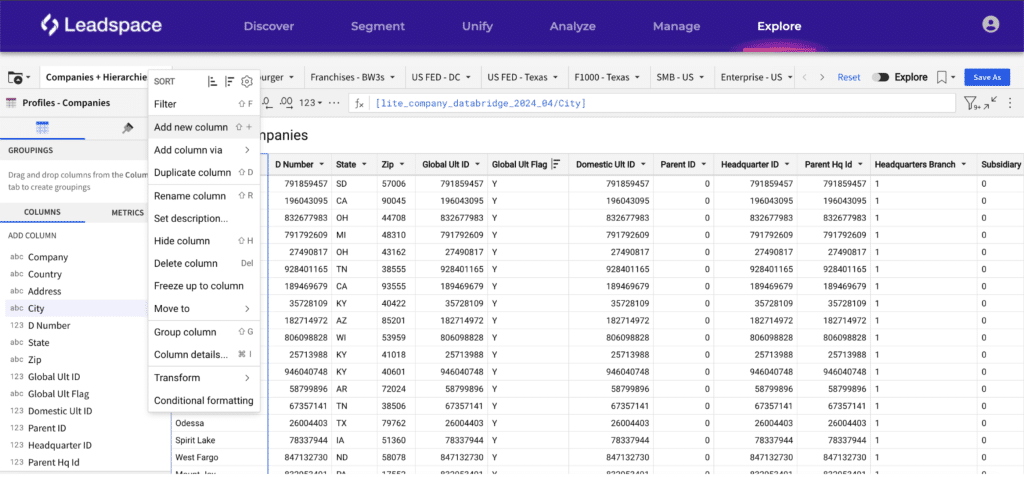
When I filtered specifically for Subway locations within the United States, then expanded the view, I’m able to access a working sheet of the nearly 12,000 Subway locations with 46 columns of data fields related to each location’s hierarchical environment. I can also drag and drop the columns to create my own grouping, where I can add or modify columns and filter the entire dataset even further. This can be especially useful in targeting by adding in metro-intent topics – being able to see a specific location at Subway who has expressed intent in your type of product or solution, then honing-in on the people at that location directly.
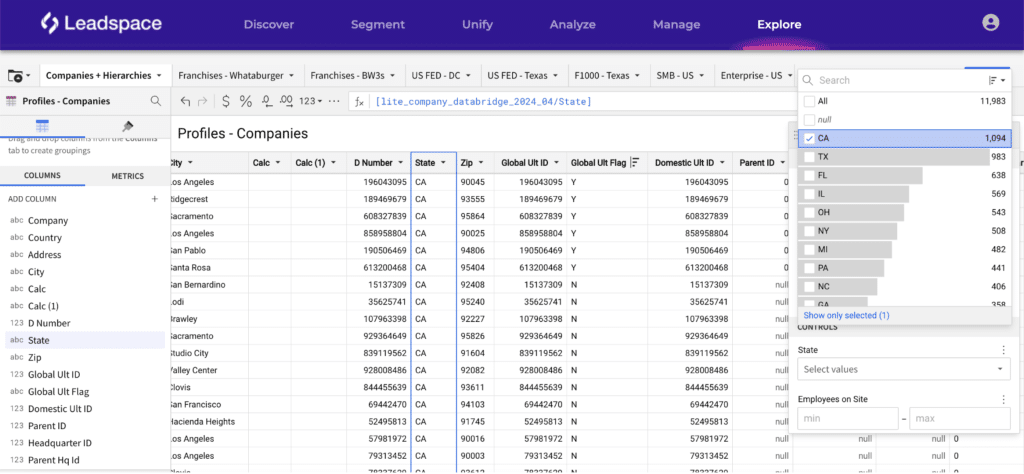
With global ultimate IDs, domestic ultimate IDs, subsidiary ultimate IDs, I can actually figure out how each company organizes themselves. Having all of these hierarchies mapped with direct integrations into aCRM or marketing automation system means that Leadspace can be used to clean up all the messy account data that exists in native systems. Being able to explore a company and its parent/child relationships becomes invaluable to sales and marketing teams as we aim to cross sell / up sell, especially when we add Leadspace’s person data into the mix. Knowing the hierarchies that exist around a specific person with persona scoring models and metro intent on top makes finding the right people to target easier than ever before.
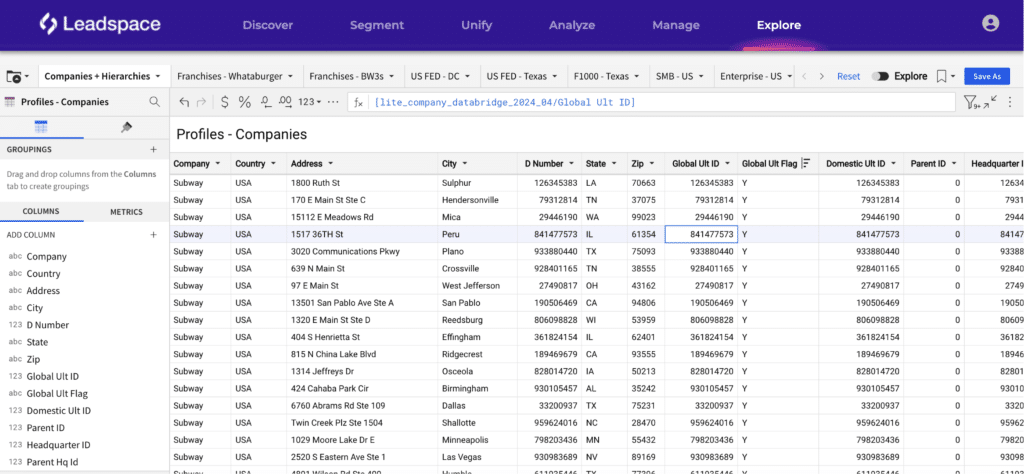
Conclusion:
Looking at the whole world and resolving down to the specific square mile that you need to target is an invaluable tool – and that’s what Leadspace’s Corporate Families Map enables with complete mapping and exploration of hierarchies within our CRM-integrated platform. You can’t do this without a powerful Identity Resolution framework, and that’s something Leadspace does better than anyone else. For more information about getting the most out of your data with Identity Resolution, see the CDPI Institute paper, Identity Resolution: The Key to Customer Data Value. If you’d like to learn more about Leadspace MAPs, please check out our recent webinar, Introducing Market Activation Packs: Fast Fix for Unproductive CRMs, by Marge Breya (President, Leadspace).


